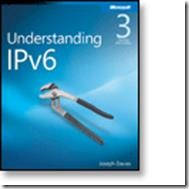Getting started with IPv6
This article has been written by Gregg O'Brien, who works as a Premier Field Engineer in Microsoft Canada. He presents this quick list of resources for getting acquainted with IPv6.
It’s no secret to most IT professionals by now that we are quickly exhausting all IPv4 address spaces and will eventually need to move away from IPv4 and adopt IPv6. The need for IPv6 is becoming even more urgent due to our increasing desire to bring the richness of cloud computing and the internet to multiple devices such as smartphones and tablets in addition to PCs.
IPv6 however, can be quite the challenge to learn for both newcomers to IT as well as IT pros with decades of experience. To aid my fellow IT professionals in their quest for IPv6 knowledge, I have compiled a list of material that can help make learning IPv6 much easier. The list moves from basic introductory materials, to articles regarding more advanced and in depth topics. Let’s get started!
Resources
IPv6 Tutorial – by MVP Michael Pietroforte: This is a great article to start with. Michael Pietroforte does an excellent job at explaining the topic of IPv6 in an entertaining and easy to follow manner.
Microsoft Introduction to IPv6: This introduction to IPv6 written by Joseph Davies is a perfect follow-up to the IPv6 Tutorial mentioned above. Building depth on the subject of IPv6, the reader can learn more about the following:
- IPv6 Addressing
- IPv6 Headers
- ICMPv6
- Multicast Listener Discovery
- Neighbor Discovery
- IPv6 Address Auto-configuration
- IPv6 Routing
Microsoft Network Technologies IPv6 Page: This page is a gateway to both basic and advanced subject matter around IPv6. Everything from introductory articles, to books, to programming with the .NET Framework with IPv6 can be found here.
The Understanding IPv6 Third Edition Book by Joseph Davies
This book now the Third Edition in print covers advanced IPv6 topics. The reader is taken through an introduction to the IPv6 protocol, and onwards through deep explanation of the bits and pieces of IPv6 and how they all come together. After reading this book, the reader can expect to have a solid understanding of both practical and theoretical IPv6 practices. One of the great features of this book as well, is the portion of the book which details how to go about building a lab in which to experiment with IPv6 to facilitate an even deeper understanding of the technology.
IPv6 RFCs 2373 and 2460: Finally we have the RFC (Request For Comments) in which the actual standards for IPv6 are officially published. Written at a very advanced technical level, these documents are not for the faint at heart, but are indeed a solid series of documents explaining the design of IPv6 and how IPv6 works.
Conclusion
So there you have it. With these resources, one should be able to ease into IPv6 gradually and come away with a solid understanding of the protocol. Good luck!
